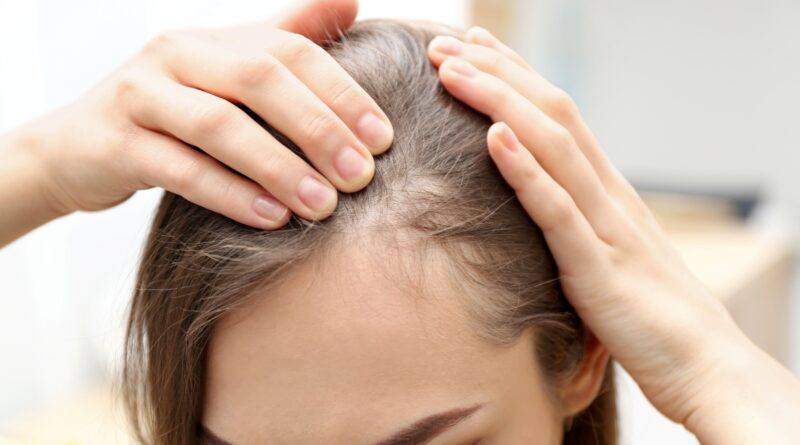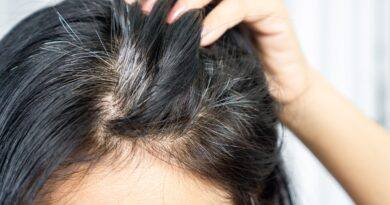Know All About The Myths Of The Hair Loss Now
Shedding the Myths: Lifestyle Factors Behind Hair Loss and What You Can Do About Them
There are few things more disheartening than looking down at a pillow, a shower drain, or a hairbrush only to find it blanketed in strands. For millions across the Indian diaspora—women and men alike—hair loss is a silent worry, creeping up gradually, often dismissed as a by-product of age, stress, or poor genetics.
Yet, the truth is far more complex.
While some degree of hair fall is entirely normal—most adults lose between 50 to 100 hairs per day, as part of the natural hair cycle—excessive or sustained shedding is often a red flag, pointing to underlying lifestyle factors that are both modifiable and preventable.
This article explores the primary lifestyle-related contributors to hair loss, drawing from the latest global health data and wellness research, with practical guidance for reversing the trend. We will also touch upon nutrition, haircare routines, stress impact, and hormonal shifts—critical variables affecting the hair health of today’s fast-paced global Indian community.
The Science of Hair Growth and Loss: A Brief Primer
Hair grows in cycles—anagen (growth phase), catagen (transitional phase), telogen (resting/shedding phase). At any given time, about 90% of scalp hairs are in the growth phase, while the remaining 10% are in resting or shedding phases.
When lifestyle imbalances tip this natural rhythm, a disproportionate number of hairs enter the shedding phase simultaneously, a condition known as telogen effluvium. According to data published by the British Association of Dermatologists, telogen effluvium is now one of the leading causes of hair loss in younger adults, particularly women aged 25–45.
Understanding Lifestyle Triggers: The Hidden Hair Thieves
Let us now explore the three major lifestyle categories where habits and routines significantly influence hair health:
1. Stress: The Invisible Hair Assassin
In today’s world, stress has become a near-constant companion. But few realise that high-stress events—whether emotional, physiological, or environmental—can trigger acute hair loss, sometimes three to four months after the inciting episode.
Why it happens: Stress induces the release of hormones like cortisol, which interfere with the normal hair cycle. In high doses, these stress hormones can push a large number of hair follicles into the resting (telogen) phase, causing sudden shedding. Known as stress-induced telogen effluvium, this condition may be temporary but deeply distressing.
Key triggers:
- Major life changes (bereavement, divorce, relocation)
- Illness, surgery, or infections (e.g., post-viral hair loss)
- Chronic work pressure or exam anxiety
Evidence: A study published in Nature Communications (2021) showed that psychological stress suppresses hair follicle regeneration, disrupting growth signals at a cellular level. Additionally, a 2023 WHO mental health survey showed that over 38% of adults in urban Indian populations report moderate-to-severe stress, a likely contributor to hair-related issues.
What to do:
- Incorporate mindfulness routines: breathing exercises, meditation, journaling
- Prioritise consistent sleep patterns (7–8 hours per night)
- Reduce caffeine and alcohol intake
- If stress persists, consider professional counselling or cognitive-behavioural techniques
Hair lost due to temporary stress usually grows back within 6–9 months, provided the underlying cause is managed.
2. Hair Styling and Scalp Abuse: The Damage You Didn’t See Coming
Our grooming habits—often rooted in culture, aesthetics, or convenience—can inadvertently damage the very strands we’re trying to enhance.
Common culprits:
- Tight hairstyles (e.g., ponytails, braids, buns): Repeated tension can cause traction alopecia, a type of hair loss especially common among women in the Indian and African diasporas.
- Heat tools (straighteners, curling irons, blow dryers): Excessive use degrades hair keratin and weakens the cuticle.
- Chemical treatments (dyes, relaxers, perms): These alter hair structure, increasing breakage and scalp irritation.
- Harsh shampoos: Sulphate- and alcohol-laden products strip natural oils, making hair brittle and dry.
Impact: According to the International Journal of Trichology (2020), over 30% of women reporting hair thinning showed signs of traction or breakage linked to cosmetic styling practices. In diaspora populations, where festive grooming or workplace styling is common, this risk may be higher.
Solutions:
- Switch to low-manipulation styles (loose braids, open hair, silk scrunchies)
- Limit heat use to 1–2 times per week; always apply a heat protectant
- Avoid overlapping chemical treatments (colouring followed by straightening)
- Use gentle, sulphate-free, pH-balanced products
- Regular scalp massage with light oils (like coconut or rosemary oil) can improve circulation
Be kind to your scalp—it’s the soil from which your hair grows.
3. Nutritional Deficiencies: When the Plate Fails the Follicle
Hair is a rapidly growing tissue, and like any such structure, it depends on consistent nutrient supply. Deficiencies in key micronutrients and macronutrients often manifest first as brittle hair, thinning, or slow growth.
Critical nutrients linked to hair health:
- Iron: Essential for oxygen supply to hair follicles. Deficiency leads to diffuse shedding.
- Vitamin B12: Crucial for cell reproduction and red blood cell formation.
- Vitamin D: Modulates keratinocyte growth. Low levels are strongly correlated with hair thinning.
- Biotin (Vitamin B7): Supports the production of keratin. Deficiency is rare but significant.
- Zinc: Regulates hair follicle recovery and scalp health.
- Protein: Hair is primarily made of keratin, a protein. Low protein intake slows growth.
- Omega-3 fatty acids: Improve hair elasticity and hydration.
Data point: A 2022 study conducted by the All India Institute of Medical Sciences (AIIMS) found that 41% of urban Indian women aged 20–40 were deficient in iron, correlating with higher rates of unexplained hair fall.
Dietary tips:
- Include leafy greens, lentils, seeds, eggs, dairy, and lean meats regularly
- Supplement where necessary (only after blood work)
- Stay hydrated: water deficiency can affect skin and scalp integrity
- Avoid extreme diets or weight loss regimens
If following a vegetarian or vegan diet, work with a nutritionist to ensure complete protein and vitamin B12 sources are included.
Bonus: Hormonal Shifts and Ageing
Though not a ‘lifestyle factor’ in the conventional sense, hormonal changes—particularly in women during perimenopause and menopause—are closely tied to hair loss. Declining oestrogen and progesterone levels reduce the duration of the anagen (growth) phase, causing hair to thin and fall out more easily.
For Indian-origin women, this phase begins around age 45–50, but symptoms often appear earlier due to genetic and environmental factors.
What helps:
- Balanced diet with phytoestrogens (like flaxseed and soy)
- Scalp care to reduce inflammation
- Gentle physical activity to support hormonal balance
- Speak with a specialist if symptoms are severe or rapidly progressive
When to Consider Medical Intervention
If natural remedies and lifestyle corrections fail to slow hair loss after 6–9 months, you may consider over-the-counter or prescribed solutions like topical minoxidil. It’s widely available and approved in many countries for both male and female pattern hair loss. However, results vary, and any such decision should be preceded by medical evaluation.
Be cautious of unregulated supplements or miracle serums sold online—many contain harmful additives or unverified ingredients.
A Few Preventive Habits Worth Embracing
- Sleep on satin or silk pillowcases to reduce hair friction
- Wash hair 2–3 times a week depending on scalp type; overwashing can strip oils
- Air-dry hair when possible; avoid aggressive towel-drying
- Do not comb hair when it’s soaking wet—use a wide-toothed comb gently
- Regular trims (every 6–8 weeks) help reduce split ends and breakage
A Holistic View of Hair Health
Hair is a reflection of internal and external balance. It records your lifestyle choices—nutrition, stress, routines—in every strand. It is resilient, yes, but not invincible.
If you’re noticing more hair on your brush than your head, take heart. Most cases of lifestyle-induced hair loss are reversible with time, patience, and care. Small changes—eating better, sleeping well, being kind to your scalp—can produce transformative results over months.
As members of the global Indian community, we carry not only a genetic inheritance but also a cultural one—where hair has always been more than cosmetic. It is a symbol of identity, vitality, and connection. Let us protect it with the same reverence with which we once oiled our braids in childhood, sat under mango trees, and let the sun warm our scalp.
Disclaimer
The information provided in this article is for general educational purposes only and is not intended as a substitute for professional medical advice, diagnosis, or treatment. Readers are encouraged to consult a qualified healthcare provider for individual health concerns. The WFY Magazine and its contributors assume no responsibility for any outcomes based on the content herein.




